Designing an Efficient Floor Plan: 11 Key Characteristics to Create Your Perfect Space
From researching local building codes to maximizing natural light, we share expert tips and tools to make the process of creating an efficient floor plan smoother.
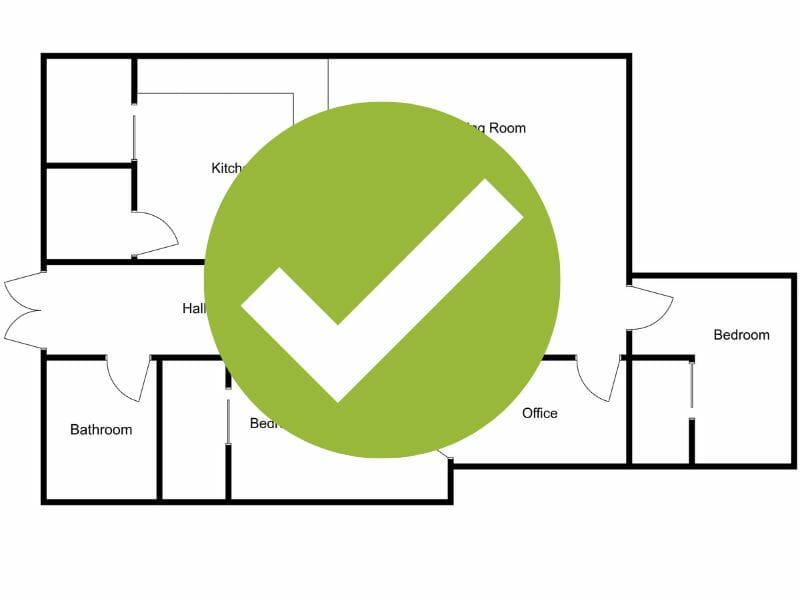
Whether planning an entire home or remodeling a single room, creating a good floor plan is the first step to realizing your perfect space.
You'll need to balance functionality, flow, and aesthetics while staying within budget and on time. A good house plan should combine all these elements to ensure your project runs smoothly.
If you're ready to tackle this challenge, read on! We'll equip you with everything you need to know.
1. Do Your Research
Before we get to the creative part, you'll need to start with some important homework.
Learn the local building codes and regulations. These cover essential aspects of your project, such as:
- Minimum Room Dimensions
- Drainage Requirements
- Wall Insulation
- Damp-Proofing
- Fire Safety
- Structural Safety
- Ventilation Needs
- Energy Efficiency
Professional contractors will be aware of local requirements, but familiarizing yourself with them before starting the design process could save you some headaches further down the line.
"My top tip is to really spend time planning and dreaming up your perfect space. Do your research, get some pro advice, and use tools like RoomSketcher to see your vision come to life. It'll make your project run smoother, and you'll be way happier with the end result!"
Erik Dill, Owner of Wilmington Concrete Contractors

2. Set a Budget
You'll need to create a budget for your project. Break down your expenses into fixtures and fittings, labor costs, legal fees, and any other professional services you'll require, such as engineers, architects, plumbers, and electricians.
Remember to shop around and always get multiple quotes to save on costs.
Setting a budget ahead of time will provide some scope and stop you from getting carried away during the floor plan design stage.
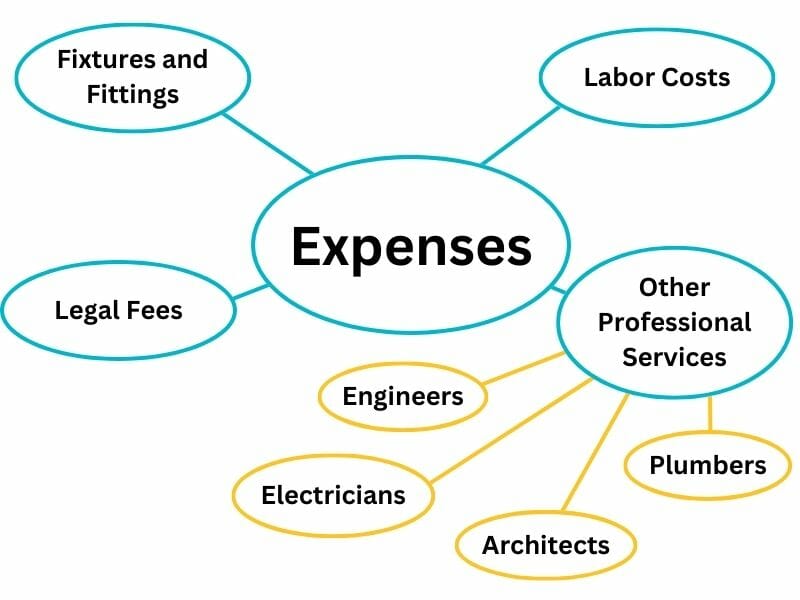
3. Measure Up
Before you can draft any plans, you'll need to measure the space you're working with. You mustn't make any mistakes, so double and triple-check your dimensions!
For most projects, a standard tape measure will suffice. Consider investing in a laser measure if you have a large area to cover. This will make your job easier and more accurate.
Measure everything, from wall lengths and ceiling heights to interior and exterior doors, windows, stairs, and corridors.
"Homeowners make a lot of mistakes when planning their room(s). That's why we never trust measurements unless we take them ourselves. Often time, homeowners don't double or triple-check their measurements. If you're going to be ordering tens of thousands of dollars worth of materials, you want to make sure that they fit!"
Thomas Borcherding, Designer & Owner of Homestar Design Remodel
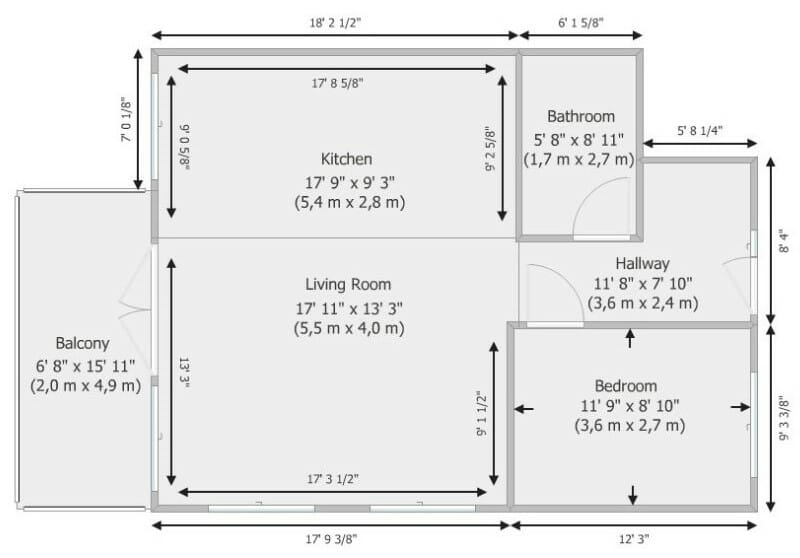
4. Personalize to Your Lifestyle
Start thinking about how your space will be used, who will use it, and its purpose. This can help you focus on your priorities as you flesh out your house plan.
For example, a family home plan requires multiple bathrooms, large dining, and sitting areas, relaxing private spaces, plenty of storage, socializing areas, and soundproofing for specific areas.
Alternatively, a small studio for a single professional should maximize the limited space available with practical and efficient design solutions.
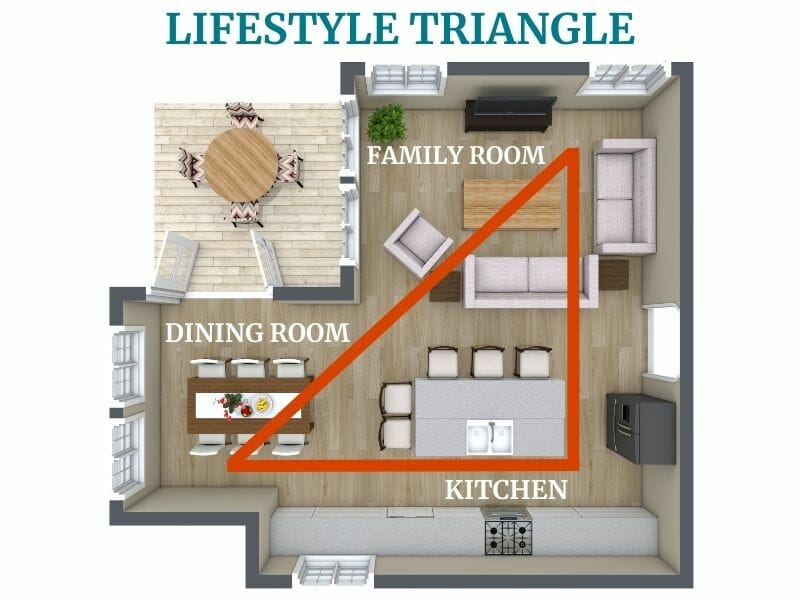
5. Create Zones
It makes sense to think about your design in terms of zones. This high-level approach forces you to think about how your space will be used and stops you from getting overwhelmed by all the intricate details.
It also breaks down the design task into smaller, more manageable pieces.
Here are some common zones to consider:
- Living (dining, lounge, games, play, cinema, garden, patio)
- Functional (bathroom, powder room, kitchen, utility, laundry, storage, pantry)
- Private (bedroom, walk-in closet)
- Work (study, office, garage, library)
Defining zones helps you organize your layout and logically position each area.
You can also create zones within individual rooms. For example, a bedroom can have a dressing, sleeping, storage zone, and an area to relax or chill out.
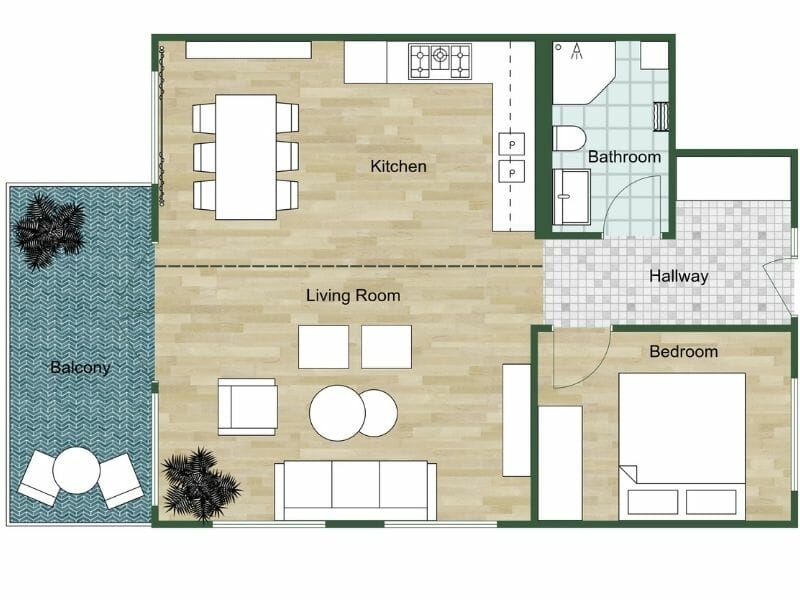
6. Maximize Traffic Flow
Once you have the purpose of your floor plan and well-defined zones to match that purpose, consider how you'll get from one point to another within your space.
This is called traffic flow and is a crucial part of creating an efficient floor plan.
The kitchen work triangle is a classic example of optimizing traffic flow within a single room.
Ideally, you want to make the distance between the refrigerator, stove, and sink as short as possible. You also want to avoid obstructions and leave enough space for 2 or 3 people to move without getting in each other's way.
"When creating a floor plan or room layout, it is essential to take into account the natural flow of the space. This includes providing clear pathways throughout the room, as well as allowing for flexibility in accommodating different activities and furniture pieces."
Jennifer Spinelli, Founder & CEO of Watson Buys
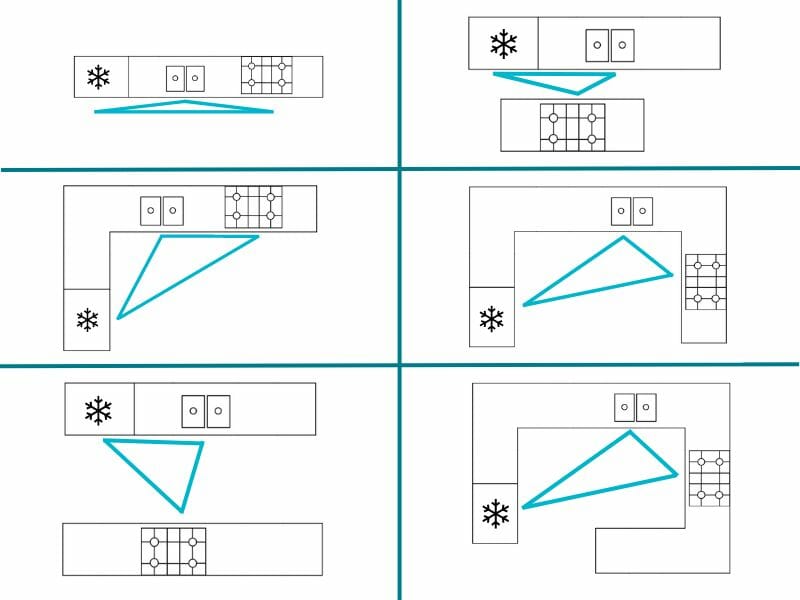
7. Don't Forget the Outdoor Area
If your canvas includes outdoor space, include it in your floor plan. Why not install an outdoor kitchen to take advantage of those balmy summer months? Or else a garden seating area to read a good book.
Remember that outdoor appliances need to be weatherproof and therefore tend to cost more than their indoor counterparts, so budget accordingly.
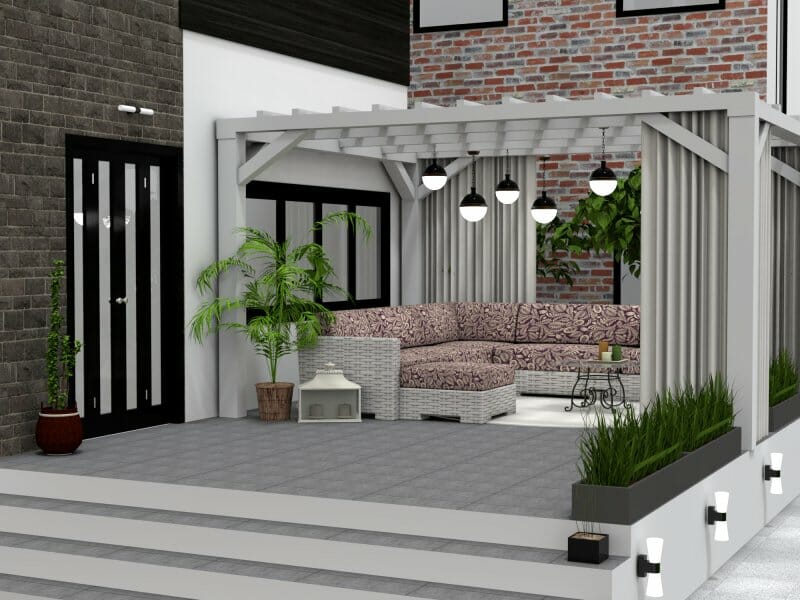
8. Future-Proof
Consider how your priorities and requirements might change in the next few years, and try to build these potential developments into your floor plan.
Whether you're planning on extending your family, caring for elderly relatives, or retiring, laying the foundations now will make future updates much easier (and less costly).
Future-proofing could be as simple as splitting a large bedroom into two or as complex as extending your property to create an annex or widening hallways and doors for wheelchair access.
"Take the time to think about the layout of your home, both now and in the future. Consider how each space will be used, what activities or functions you plan to carry out within it, and any possible changes that may happen down the line."
Keith Sant, Head of Property Acquisition & Co-Founder of Texas Cash House Buyer
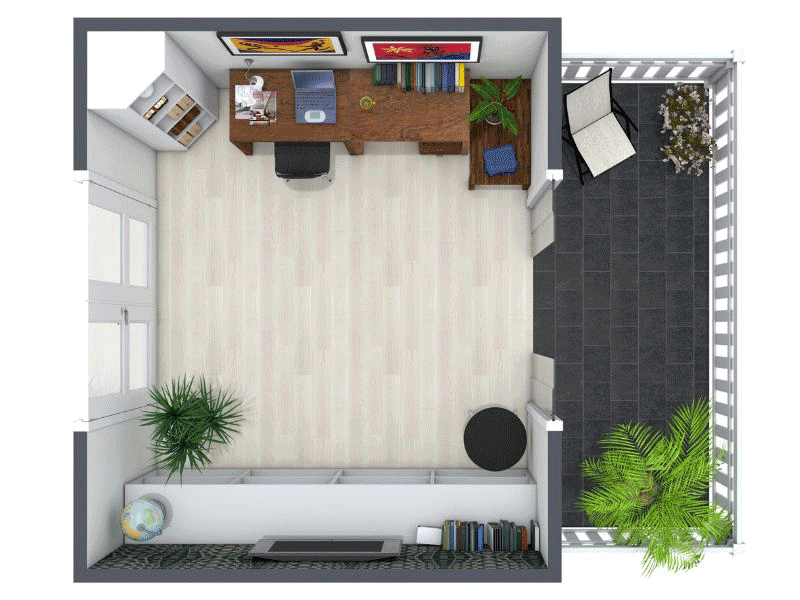
9. Use Appropriate Room Sizes
When it comes to room sizes, you're performing a balancing act. By making one room larger, you'll compromise the available space for other rooms.
This is why thinking about your priorities and lifestyle is important. If you love hosting dinner parties, maximize your living zone and compromise on bedroom size. Alternatively, a large kitchen and lounge may not be your priority if you spend most of your time eating out.
Room sizes also determine the amount and type of furniture you can install.
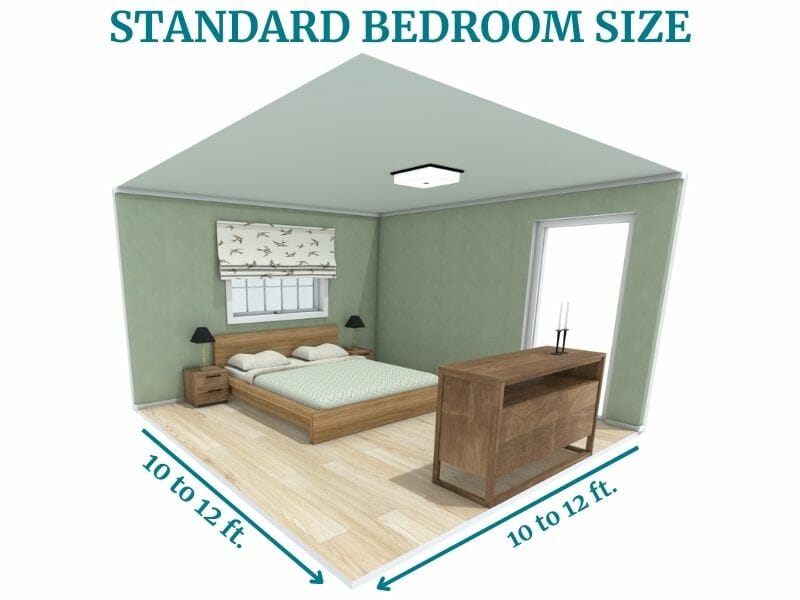
10. Don't Overlook Storage
When asked what's most important in the kitchen, 64% agreed that "countertop and cabinet space" was a priority.
Your circumstances will determine how much storage you need, but remember; you can never have too much.
Having plenty of options available will help you maintain a clutter-free home. There are some clever solutions to choose from, including under-stair closets, under-bed drawers, corner shelves, cubbyholes, and ceiling hangers.
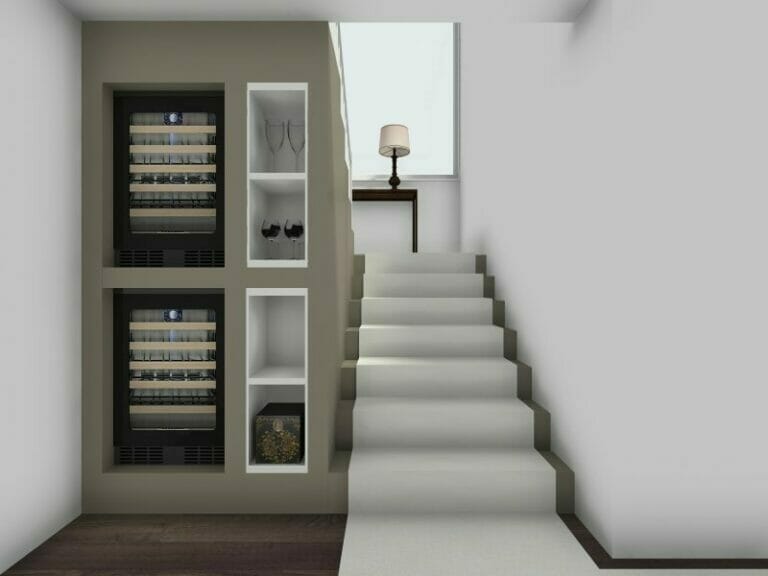
11. Optimize Lighting
Designing a good floor plan means considering both natural and artificial lighting. Think about sun orientation and window positioning to take full advantage of natural light sources.
You can also install mirrors and use bright reflective tones to make your space feel extra roomy.
Spotlights work well in functional zones like kitchens or bathrooms. For a more relaxing vibe, use ambient soft lighting and install a dimmer switch.
"If you are looking to ensure a functional and aesthetically pleasing space, the best thing to do is incorporate natural lighting."
Daniel Cabrera, Founder of Sell My House Fast
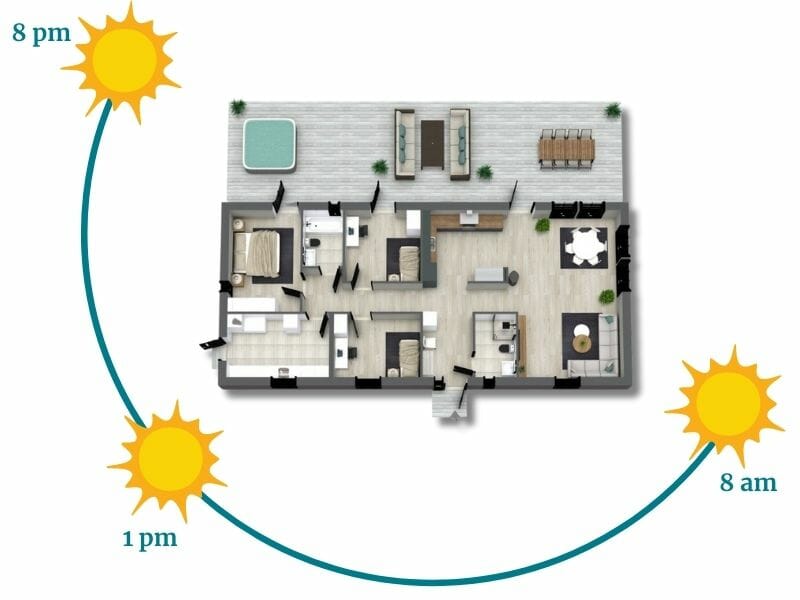
- Logical Zoning: Organizing spaces based on function. Grouping the living room, dining room, and kitchen in one area for ease of social interaction.
- Lifestyle Personalization: Tailoring the space to the unique needs of its inhabitants. Designing a home office or hobby room if you work or craft from home.
- Optimized Traffic Flow: Ensuring easy and natural movement between rooms. Positioning the bedrooms close to the bathroom to minimize nighttime trips.
- Abundant Storage: Offering sufficient storage options for a clutter-free environment. Incorporating built-in closets, under-stair storage, and attic space.
- Appropriate Room Sizes: Designing rooms to be neither too big nor too small, but just right for their intended purpose. Ensuring the living room can comfortably seat all family members without feeling cramped or oversized.
- Future-proof Design: Incorporating elements that will remain functional and stylish as needs evolve. Adding a nursery that can later transform into a home office or a guest room.
Learn more about these essential features here.
- Local Building Regulation: Ensure your design complies with local codes and permits. Some municipalities might have height restrictions for buildings or require a certain amount of off-street parking.
- Your Budget: Tailor your design to match what you're willing and able to spend. If on a tight budget, you might opt for simpler finishes or a more compact design to save on costs.
- Triple-Checked Measurements: Verify dimensions to ensure accuracy and avoid costly mistakes. Double-checking room dimensions to ensure that your selected furniture will fit comfortably and correctly.
- Outdoor Areas: Consider how the indoor spaces will connect to and complement outdoor areas. Designing a living room with sliding doors that open onto a patio, creating a seamless indoor-outdoor flow.
- Natural Light: Prioritize windows and openings to make the most of sunlight and enhance the ambiance. Positioning the main living areas on the sunniest side of the home, or adding skylights to rooms that might lack window space.
A floor plan should be personal and designed with your individual needs in mind. Start by thinking about how your space will be used, who will use it, and what its purpose is. Split the area into logical zones, consider the traffic flow around your space, and future-proof your design wherever possible.
- Match Your Design to Your Lifestyle: Design a house that reflects how you live. If you love hosting parties, include a spacious kitchen and open living area for entertaining guests.
- Ensure Your Design is Practical and Functional: Prioritize utility as well as aesthetics. If you have elderly family members, consider a single-story design or include a downstairs bedroom and bathroom.
- Don't Get Carried Away - Stick to Your Budget: Keep financial boundaries in mind to avoid overextending. While marble countertops might be appealing, more affordable alternatives like quartz can offer a similar aesthetic without the hefty price tag.
- Include Plenty of Storage Solutions: Make sure there's a place for everything. Integrate storage benches in hallways, under-stair storage, or built-in wardrobes in bedrooms to minimize clutter.
Make sure you carefully consider your priorities and how the space will be used. You'll need to ensure good traffic flow around the home, position windows and doors to maximize natural light, and always triple-check your measurements to avoid costly mistakes! Learn more about what makes a good house design here.
An efficient floor plan should have excellent traffic flow throughout. You should split your space into different zones and position them logically. Include plenty of storage space, and remember to future-proof your designs.
Putting It All Together
Now you know what's involved in creating an efficient floor plan, it's time to get started. And the good news is you don't need to be a professional architect or have an engineering degree.
The RoomSketcher App makes drawing 2D floor plans a breeze. Simply enter your dimensions, position your windows and doors, drag and drop furniture, and experiment with different layouts.
You can even render stunning 3D images of your designs to help visualize your creative ideas.
Get started for free, and upgrade for more advanced features.
Don't forget to share this post!
Recommended Reads
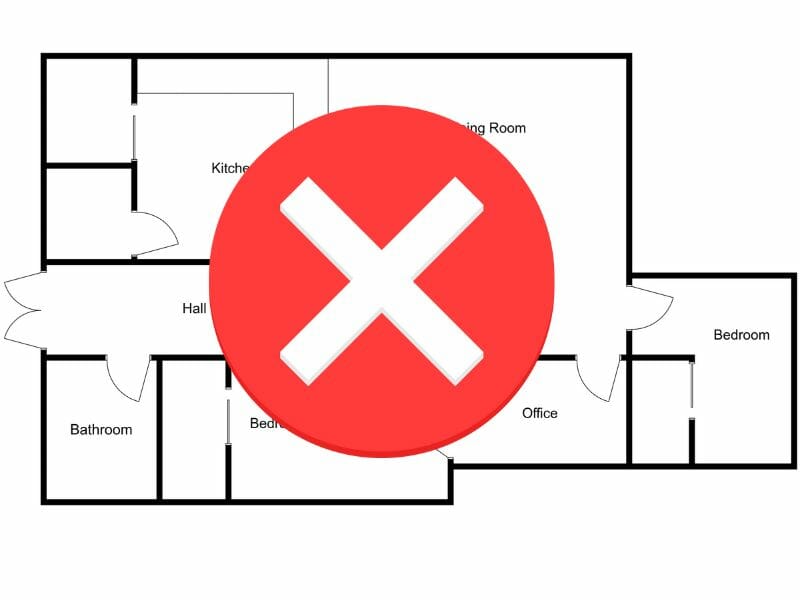
20 Common Floor Plan Mistakes and How to Avoid Them
Common floor plan mistakes can make your dream renovation a nightmare. Learn how to avoid them.
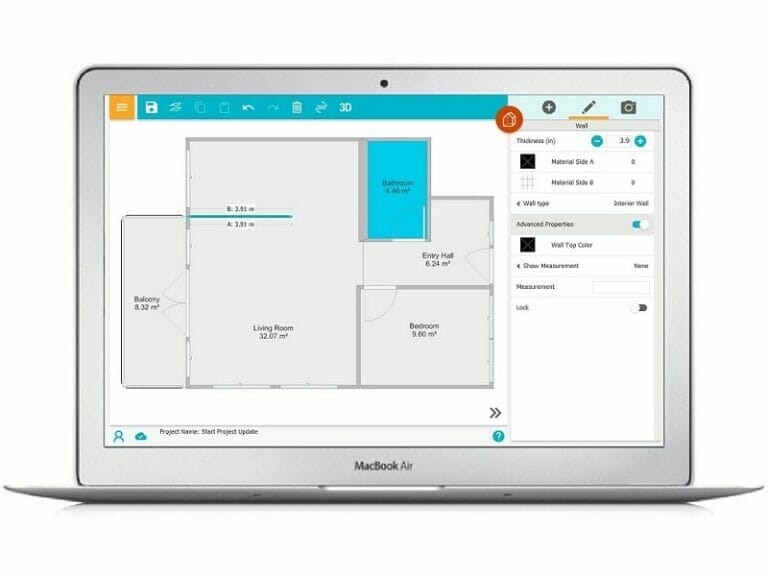
Why RoomSketcher Is the Best Floor Plan Tool Out There
After careful research, we highly recommend RoomSketcher as the best floor plan tool available. Learn the reasons why RoomSketcher stands out.
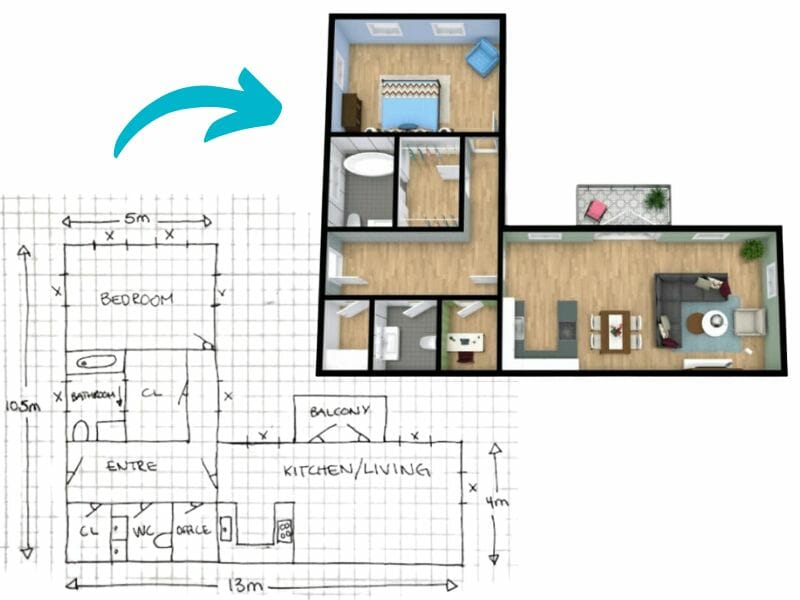
From Sketch to Reality: How to Design a House You'll Love
We give you useful steps on how to design a house yourself. Discover the key steps to designing a house that perfectly fits your needs.
